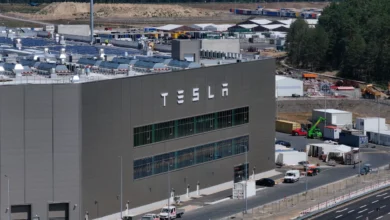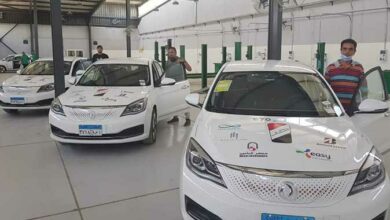
The company announced Wednesday it would no longer provide financial support for Argo AI, a self-driving car technology company it invested $1 billion in back in 2017.
Instead of having Argo develop self-driving car technology for cars without steering wheels, brakes or accelerator pedals — what is known in the industry as Level 4 or L4 technology — Ford will instead pursue in-house development of a lower level of automated driving technology.
The level it will now pursue on its own, known as Level 3 or L3, allows a driver to not pay attention to the road in certain conditions, such as on the highway, but it would expect a driver to be aware enough to quickly take control of the car if needed.
The decision will mean that Argo AI will shutdown. And the drop in value of Ford’s investment in Argo caused it to take a $2.7 billion charge in the just-completed third quarter. That resulted in an $827 million loss in the period.
Even excluding the special charges for Argo and other items, Ford reported adjusted earnings per share of 30 cents, a slide from the 51 cents it earned on that basis a year ago, but a slight improvement over the 27 cents forecast by analysts surveyed by Refinitiv.
Ford reported automotive revenue of $37.2 billion, a jump of $4 billion from a year ago and $1 billion more than the analysts’ forecasts. The revenue was helped by a $3.4 billion from higher pricing on vehicles.
Ford did have some problems in the quarter beyond the charge it took for closing down Argo. It said supply shortages left it with about 40,000 vehicles in its inventory at the end of the quarter that were built but awaiting needed parts before they can be shipped to dealers.
It also was hit with $1 billion in higher-than-expected supplier payments, and a $1.5 billion increase in commodity costs.
And it had a smaller profit and profit margin in its core North American market due to those higher commodity costs, and a loss in China, due to costs associated with the development of electric vehicles.
While higher pricing on vehicles helped its European unit post a narrow profit in the quarter compared to a narrow loss a year ago, CEO Jim Farley did concede, “Our performance in China and Europe is not nearly as healthy as we’d like it to be.”
But, in good news, Ford raised its goal for full-year cash that will be generated by the business to be between $9.5 billion and $10 billion — up from $5.5 billion to $6.5 billion — on strength in the company’s automotive operations.
Shares of Ford (F) were down 1% in after-hours trading following the earnings news.
But in the end, the big news of the earnings report was a major change in direction on self-driving vehicles.
The company insists it still expects to offer full self-driving vehicles in the future, just not soon enough to make the investment such technology will require today. It said it decided it is better to invest in driver assistance technology that is closer to being implemented on vehicles today, and that customers want from their new cars, rather than a fleet of robo-taxis with no drivers at all aboard.
“We’re optimistic about a future for L4 ADAS [advanced driver assistance systems], but profitable, fully autonomous vehicles at scale are a long way off and we won’t necessarily have to create that technology ourselves,” said Farley.
Farley said he expects to be able to find jobs for many of the Argo employees at Ford, having them switch gears to develop L3 driver assistance features.
“That’s really the decision, in many ways, that is driving what we’re doing here at Argo… we are deeply passionate about the L3 mission,” said Doug Field, Ford’s chief advanced product development and technology officer.
He said there is only so much talent available to develop the different driver assistance and self-driving features.
“So this is the way we want to use that talent,” he said.




